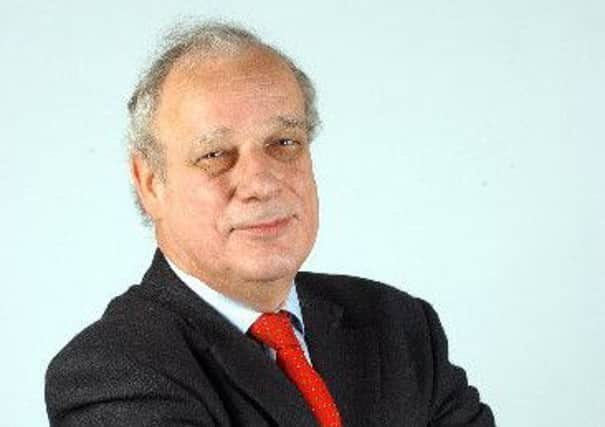Bill Jamieson: Oh deer, tourism sector in a rut


Perhaps the heat and the need for refreshment have driven them down from the glen. I have been fighting them off throughout the night with the hose but they were back again in the morning, trampling, scrunching and munching. It’s been like Rorke’s Drift, with antlers.
But then there’s the upside. Radiant sunshine and sparkling lochs; gorgeous scenery and babbling burns: what better tonic could there be for Scotland’s tourism industry than the brilliant weather of the past two weeks?
Advertisement
Hide AdAdvertisement
Hide AdAfter the relentless rain of last summer, we are surely back to boom conditions for our hotels and rural businesses.
If only. The problem with a long rotten summer is the dark reputational stain it casts over subsequent years. Thousands who came to Scotland last year for the great outdoor experience will have earnestly vowed never to attempt a Scottish holiday again. They are more likely to have booked a holiday in Tenerife than risk a return to Glen Drookit.
It doesn’t mean that our prospects are permanently blighted – the Ryder Cup and Commonwealth Games offer the hope of stronger recovery next year. But the idea that this much improved summer weather has brought instant recovery and prosperity to our beleaguered tourism industry and myriad Highland businesses is fanciful.
Anecdotal evidence in the north of the Loch Lomond and Trossachs National Park suggests many businesses are continuing to struggle. Hotel bookings are sluggish, restaurants quiet, requests for fishing permits down and many shop takings lower.
The high street of Callander, the town that prides itself as the gateway to the Highlands, is blighted by boarded up shops and closing down sales. It’s not as if the town is passively resigned to decline. It has undertaken a facelift and sought to improve its appearance. But the signs of low visitor numbers and modest shop takings are difficult to suppress.
Latest figures from VisitScotland, that inexhaustible font of optimism, point to a recovery. But even here the upturn is modest. Day visits in April 2013 were down on 2012’s figure, along with spend. Confidence is mostly down in the accommodation sector, with hostels and holiday parks reporting a decrease on last year’s levels respectively.
The value of Scotland’s tourism sector slumped by almost £200 million in the space of a year – equivalent to more than £500,000 a day. Visitors to Scotland dropped by four per cent, with the London Olympics, bad weather and the economic climate blamed for the downturn.
Tourist spend in Scotland was down 6.3 per cent, and the number of trips into Scotland from overseas fell by 5.3 per cent. And according to figures published in a study for the Office for National Statistics, around 600,000 fewer visitors came to Scotland in 2012 compared with the previous 12 months. The number of nights travellers spent in the country between July and September fell by more than 100,000 – or 12 per cent – on the same period in 2011. And their spending dropped by about £50m. Overall, the value of the domestic tourism industry in Scotland was down 4.2 per cent, to £2.9 billion.
Advertisement
Hide AdAdvertisement
Hide AdThe Scottish Government has pointed to a growth in spending by visitors from North America, and a growth in numbers from there in the final quarter of 2012. But Mike Cantlay, the chair of VisitScotland, described the environment for tourism businesses as the toughest since the start of the economic downturn.
If times were tough for Scotland’s capital and the popular tourist hot spots, imagine what it has been like for hundreds of small rural businesses scattered across the Highlands. These are critically dependent on “drive-through” trade and visitors booking for a week in the numbers they once did.
The publication of the official figures coincided with research indicating that Scottish hotels have failed to share an upturn in occupancy rates elsewhere in the UK in the early months of 2013. A survey by accountants BDO suggests that Scottish hotel occupancy in February rose by just 0.4 per cent. The equivalent figure for England was 2.7 per cent, with a 3.1 per cent rise in Wales.
The weather is by no means the only factor. Continuing recession across Europe, a glacial recovery across the UK and continuing pressure on household incomes have cut into holiday spending. And UK holiday destinations have inevitably suffered through cost comparisons with Mediterranean destinations.
Add to this the weather factor and it is not hard to see how rural Scotland is now experiencing the inevitable legacy of last year – and it may take a succession of better summers to rebuild tourist confidence.
The importance of tourist business to Scotland should not be underestimated. According to a Deloitte study, tourism employs 270,000 people in Scotland in 20,000 diverse businesses. It reckoned that almost 16 million tourists take overnight trips here. The industry contributes £11bn annually and supports around 10 per cent of employment in Scotland.
One vibrant contributor to the total is business or conference tourism, estimated to be worth £1.9bn. In 2011, Scotland hosted 86,524 such meetings. It also has an impact on the wider visitor economy. Neil Brownlee, head of VisitScotland’s Business Tourism Unit, says the sector “is an absolutely key sector supporting not only conference centres and hotels, but thousands of other operators not normally associated with tourism … It really is a shop window for Scotland.” So there are reasons for hope – but however hot it gets, for visitors or the stags, we should not count on an immediate bounce back.
Twitter: @Bill_Jamieson